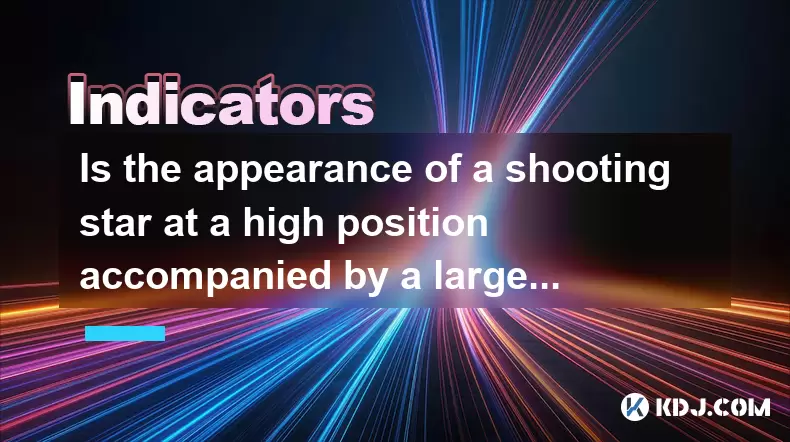-
 Bitcoin
Bitcoin $108,092.5658
-0.99% -
 Ethereum
Ethereum $2,546.4530
-1.12% -
 Tether USDt
Tether USDt $1.0000
0.01% -
 XRP
XRP $2.2676
0.12% -
 BNB
BNB $659.1616
-0.30% -
 Solana
Solana $148.8297
-1.97% -
 USDC
USDC $1.0000
0.02% -
 TRON
TRON $0.2874
-0.30% -
 Dogecoin
Dogecoin $0.1676
-3.64% -
 Cardano
Cardano $0.5765
-1.73% -
 Hyperliquid
Hyperliquid $37.2069
-6.18% -
 Bitcoin Cash
Bitcoin Cash $497.9918
-0.10% -
 Sui
Sui $2.8427
-2.26% -
 Chainlink
Chainlink $13.2689
-2.06% -
 UNUS SED LEO
UNUS SED LEO $9.0541
0.15% -
 Stellar
Stellar $0.2487
-0.92% -
 Avalanche
Avalanche $17.7710
-3.09% -
 Shiba Inu
Shiba Inu $0.0...01167
-1.28% -
 Toncoin
Toncoin $2.7488
-2.80% -
 Hedera
Hedera $0.1559
-2.28% -
 Litecoin
Litecoin $85.8945
-2.48% -
 Monero
Monero $316.0985
-2.09% -
 Dai
Dai $1.0001
0.02% -
 Polkadot
Polkadot $3.3481
-1.83% -
 Ethena USDe
Ethena USDe $1.0000
0.00% -
 Bitget Token
Bitget Token $4.2910
-3.04% -
 Uniswap
Uniswap $7.4131
-0.09% -
 Aave
Aave $280.9266
-2.67% -
 Pepe
Pepe $0.0...09816
-3.18% -
 Pi
Pi $0.4557
-2.29%
Is the appearance of a shooting star at a high position accompanied by a large volume a peak signal?
Jul 08, 2025 at 11:22 am

What Is a Shooting Star Candlestick Pattern?
A shooting star is a bearish reversal candlestick pattern that typically appears at the end of an uptrend. It consists of a small real body near the lower end of the trading range, with a long upper shadow that is at least twice the length of the body. The long wick indicates rejection of higher prices, suggesting that buyers attempted to push the price upward but were met with strong selling pressure.
This candlestick pattern is considered significant when it forms after a clear and sustained upward movement in price. However, its reliability increases dramatically when it is accompanied by other technical signals such as high volume or resistance levels.
Understanding Volume in Conjunction With the Shooting Star
Volume plays a crucial role in validating the strength of any candlestick pattern, including the shooting star. When a shooting star appears at a high position with large volume, it often suggests that institutional or professional traders are actively taking profits or initiating short positions.
- High volume during the formation of a shooting star indicates intense selling pressure.
- It reflects a shift in market sentiment from bullish to bearish.
- Large volume confirms that the rejection at the high was not just noise but a meaningful move driven by real participation.
In contrast, a shooting star that forms on low volume may simply be a temporary pullback rather than a reversal signal.
How to Identify a Valid Shooting Star at a High Position
To properly identify a valid shooting star candlestick, especially one that could indicate a peak, traders should consider several key criteria:
- The market must be in an uptrend, preferably a strong and extended one.
- The shooting star must appear at or near a recent high or resistance level.
- The candle's upper shadow should be significantly longer than the body—ideally two to three times the body length.
- The real body should be small and located at the lower end of the candle’s range.
- Large trading volume during the candle’s formation supports the bearish signal.
Failure to meet these conditions may result in false signals or misleading interpretations.
Why a Shooting Star With High Volume May Indicate a Market Top
When a shooting star occurs at a high point in price and is accompanied by unusually high volume, it can serve as a strong warning sign for bulls. This combination often represents a climax top, where buying enthusiasm has reached its peak and sellers begin to dominate.
- The high volume shows increased participation, particularly from large players unloading positions.
- The long upper shadow demonstrates failed attempts to push prices higher, indicating resistance is firm.
- A subsequent close below the shooting star’s body can confirm the reversal and suggest further downside potential.
Traders who recognize this setup early can position themselves accordingly, either by exiting long positions or initiating short trades.
How to Trade a Shooting Star With High Volume
Trading a shooting star at a high position with large volume involves careful planning and risk management. Here’s how you can approach it:
- Confirm the trend context: Ensure the asset has been in a clear uptrend before the shooting star appears.
- Look for confluence with resistance levels or previous swing highs to increase the probability of a reversal.
- Wait for the next candle to close below the shooting star’s body to validate the bearish signal.
- Place a short entry order just below the low of the shooting star or wait for a retest of resistance.
- Set a stop-loss above the high of the shooting star to manage risk.
- Consider using volume indicators like OBV or Chaikin Money Flow to confirm the selling pressure.
Using multiple time frame analysis (e.g., checking the daily chart for trend and the 1-hour chart for entry) can also enhance accuracy.
Common Mistakes Traders Make With Shooting Stars
Even experienced traders can misinterpret shooting star patterns if they fail to account for broader market dynamics. Some common mistakes include:
- Ignoring the trend context: A shooting star in a downtrend or sideways market is less meaningful.
- Failing to check volume: A shooting star without high volume lacks conviction and may lead to premature exits or entries.
- Taking the signal in isolation: Relying solely on candlestick patterns without confirming with other tools like moving averages or RSI can result in false signals.
- Overtrading every shooting star: Not all shooting stars indicate reversals; many occur mid-trend as pauses rather than peaks.
Avoiding these pitfalls can help traders better assess whether a shooting star truly signals a peak or just a temporary pause.
Frequently Asked Questions
Q: Can a shooting star form in a downtrend and still be significant?
A: While a shooting star is traditionally a bearish reversal pattern in an uptrend, it can occasionally appear in a downtrend. In such cases, it may indicate a brief pause or consolidation rather than a full reversal unless confirmed by other bullish signals.
Q: How does the shooting star differ from the inverted hammer?
A: Both have similar shapes, but the inverted hammer appears in a downtrend and is considered a bullish reversal pattern, whereas the shooting star appears in an uptrend and is bearish.
Q: What timeframe is best for analyzing shooting star patterns?
A: Higher timeframes like the daily or weekly charts tend to offer more reliable shooting star signals due to stronger volume and clearer trend structure. Shorter timeframes may produce more frequent but less meaningful patterns.
Q: Should I always wait for the next candle to close before acting on a shooting star?
A: Yes. Waiting for confirmation via the next candle’s close helps filter out false signals and improves trade accuracy, especially when trading off candlestick patterns alone.
Clause de non-responsabilité:info@kdj.com
Les informations fournies ne constituent pas des conseils commerciaux. kdj.com n’assume aucune responsabilité pour les investissements effectués sur la base des informations fournies dans cet article. Les crypto-monnaies sont très volatiles et il est fortement recommandé d’investir avec prudence après une recherche approfondie!
Si vous pensez que le contenu utilisé sur ce site Web porte atteinte à vos droits d’auteur, veuillez nous contacter immédiatement (info@kdj.com) et nous le supprimerons dans les plus brefs délais.
-
 ICNT Échangez maintenant
ICNT Échangez maintenant$0.3182
30.31%
-
 M Échangez maintenant
M Échangez maintenant$0.2011
23.43%
-
 SOLO Échangez maintenant
SOLO Échangez maintenant$0.3788
17.55%
-
 HSK Échangez maintenant
HSK Échangez maintenant$0.7010
17.49%
-
 SHX Échangez maintenant
SHX Échangez maintenant$0.0116
15.42%
-
 COREUM Échangez maintenant
COREUM Échangez maintenant$0.1392
8.59%
- Bitcoin Solaris Market Launch: A New Dawn or Just Another Altcoin?
- 2025-07-08 20:30:12
- Bitcoin, Memecoin Mania, and the All-Time High Hunt: What's Next?
- 2025-07-08 20:30:12
- Byrq Coin: Scam or Savior? A Deep Dive Review
- 2025-07-08 20:50:12
- Shiba Inu's Burn Rate Bonanza: Can Crypto Burns Ignite a Price Rally?
- 2025-07-08 20:50:12
- Telekom, injectif et validateurs: une plongée profonde dans la sécurité et la croissance du réseau
- 2025-07-08 21:10:12
- ROM: Golden Age - un demi-million de pré-registrations et un butin crypto!
- 2025-07-08 21:15:12
Connaissances connexes

How to trade Dogecoin based on funding rates and open interest
Jul 07,2025 at 02:49am
<h3>Understanding Funding Rates in Dogecoin Trading</h3><p>Funding rates are periodic payments made to either long or short traders ...

What is the 'God Mode' indicator for Dogecoin
Jul 07,2025 at 04:42pm
<h3>Understanding the 'God Mode' Indicator</h3><p>The 'God Mode' indicator is a term that has emerged within cryptocurrency trading ...

Using Gann Fans on the Dogecoin price chart
Jul 07,2025 at 09:43pm
<h3>Understanding Gann Fans and Their Relevance in Cryptocurrency Trading</h3><p>Gann Fans are a technical analysis tool developed b...

How to spot manipulation on the Dogecoin chart
Jul 06,2025 at 12:35pm
<h3>Understanding the Basics of Chart Manipulation</h3><p>Chart manipulation in the cryptocurrency space, particularly with Dogecoin...

Dogecoin market structure break explained
Jul 07,2025 at 02:51am
<h3>Understanding the Dogecoin Market Structure</h3><p>Dogecoin, initially created as a meme-based cryptocurrency, has evolved into ...

How to backtest a Dogecoin moving average strategy
Jul 08,2025 at 04:50am
<h3>What is a Moving Average Strategy in Cryptocurrency Trading?</h3><p>A moving average strategy is one of the most commonly used t...

How to trade Dogecoin based on funding rates and open interest
Jul 07,2025 at 02:49am
<h3>Understanding Funding Rates in Dogecoin Trading</h3><p>Funding rates are periodic payments made to either long or short traders ...

What is the 'God Mode' indicator for Dogecoin
Jul 07,2025 at 04:42pm
<h3>Understanding the 'God Mode' Indicator</h3><p>The 'God Mode' indicator is a term that has emerged within cryptocurrency trading ...

Using Gann Fans on the Dogecoin price chart
Jul 07,2025 at 09:43pm
<h3>Understanding Gann Fans and Their Relevance in Cryptocurrency Trading</h3><p>Gann Fans are a technical analysis tool developed b...

How to spot manipulation on the Dogecoin chart
Jul 06,2025 at 12:35pm
<h3>Understanding the Basics of Chart Manipulation</h3><p>Chart manipulation in the cryptocurrency space, particularly with Dogecoin...

Dogecoin market structure break explained
Jul 07,2025 at 02:51am
<h3>Understanding the Dogecoin Market Structure</h3><p>Dogecoin, initially created as a meme-based cryptocurrency, has evolved into ...

How to backtest a Dogecoin moving average strategy
Jul 08,2025 at 04:50am
<h3>What is a Moving Average Strategy in Cryptocurrency Trading?</h3><p>A moving average strategy is one of the most commonly used t...
Voir tous les articles

























































































